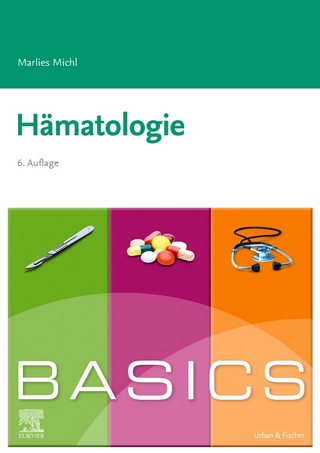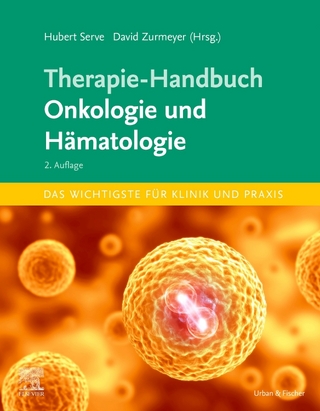
The Respiratory Functions of Blood
Kluwer Academic/Plenum Publishers (Verlag)
978-0-306-30998-4 (ISBN)
- Titel ist leider vergriffen;
keine Neuauflage - Artikel merken
Though it deals fairly thoroughly with physicochemical aspects of the blood's gas transport properties and with the molecular chemis- try of hemoglobin, its main emphasis is the gas transport function of the blood in vivo and modes of its disturbance in disease.
1 Introduction.- 2 Two Gas Transport Problems.- Requirements at Rest.- Oxygen.- Carbon Dioxide.- Equilibrium Binding Curves.- Requirements during Exercise.- Some Further Requirements.- Regulation.- Darwinian Evolution in the Genealogy of Hemoglobin.- Why Red Cells?.- 3 Physical Relationships in Blood-Tissue Gas Transport.- 4 Blood as a Physicochemical System-I. Hemoglobin and Its Interaction with Ligands.- Hemoglobin Structure.- Ligand Binding and Conformational States.- The Monod-Wyman-Changeux Model.- Adair's Intermediate Compound Hypothesis.- Linked Functions.- The Molecular Basis of Ligand Binding, Conformational Change, and Allosteric Interaction of the Hemoglobin Molecule.- Oxygen.- Protons.- Carbon Dioxide.- 2,3-Diphosphoglycerate.- Carbon Monoxide.- Oxygen Binding and Interaction Coefficients under Physiological Conditions.- Basic Considerations.- The Whole Blood Oxygen Binding Curve under Standard Conditions.- Numerical Values.- Effect of Hemoglobin Concentration.- Carbon Monoxide.- Effect of Temperature.- Embryonic and Fetal Hemoglobins.- Hemoglobin-Ligand Kinetics in Solution.- Hemoglobin-Oxygen Interaction.- Hemoglobin Interactions with CO2, Protons, and 2,3- DPG.- 5 Blood as a Physicochemical System-II. Equilibria, Steady States, and Transport Kinetics of the Red Cell-Plasma Distributions.- Definition of a Standard State for Measurements of Blood Composition.- The Standard Steady State Distributions.- Red Cell Water.- Red Cell Ionic Composition.- Thermodynamic Equilibria and Ion Activity Coefficients.- Erythrocyte and Plasma Responses to Perturbations in Composition.- Fundamental Constraints and Approach to Analysis.- Applications of the Fundamental Relationships.- Review of Data on the Kinetics of Relaxation Processes in Blood.- 6 The Dynamics of Oxygen, Carbon Dioxide, and Proton Transport under Normal Conditions.- The Model System.- Geometric Considerations.- Analysis of Plasma and Red Cell Compositional Profiles.- Determination of Systemic Capillary Blood Flowrate.- Simulation of Gas Transport at Rest.- Base Case.- A Simplifying Approximation.- Oxygen Transport in Exercise.- Facilitated Gas Transport in Tissue.- Oxygen-Myoglobin.- Carbon Dioxide-Bicarbonate.- 7 Some Physiological Control Systems.- The Controlled Gas Transport System.- The Red Cell 2,3-DPG Concentration.- 2,3-DPG and the Red Cell Glycolytic System.- Variations in Red Cell 2,3-DPG Concentration under Physiological Conditions.- The Whole Blood Hemoglobin Concentration.- General Aspects.- The Erythropoietin System.- Variations under Physiological Conditions.- Protection against Oxidation of Hemoglobin.- The Heme Groups.- The-SH Groups.- 8 Disturbances of the Respiratory Functions of Blood.- Abnormal Acid-Base Balance.- General Discussion and Results.- The in Vivo Dependence of Red Cell 2,3-DPG Level, [DPG]T, upon pH and Hemoglobin Oxygen Saturation.- Abnormal Erythron function.- Anemia.- Oxygen Affinity and Red Cell Age.- Kinetics of Oxygen Transfer in Red Cells with Increased Rigidity.- Polycythemia.- Abnormal Hemoglobins.- Abnormal Red Cell Organic Phosphate Concentration.- Carboxyhemoglobin and Methemoglobin.- Stored Red Cells.- Abnormal Lung Function and Ambient Air.- Simulation of the Effects of Abnormal Arterial Gas Tensions.- 9 Concluding Remarks.- References.
| Reihe/Serie | Topics in Hematology |
|---|---|
| Zusatzinfo | biography |
| Sprache | englisch |
| Themenwelt | Medizinische Fachgebiete ► Innere Medizin ► Hämatologie |
| Studium ► 1. Studienabschnitt (Vorklinik) ► Physiologie | |
| ISBN-10 | 0-306-30998-X / 030630998X |
| ISBN-13 | 978-0-306-30998-4 / 9780306309984 |
| Zustand | Neuware |
| Informationen gemäß Produktsicherheitsverordnung (GPSR) | |
| Haben Sie eine Frage zum Produkt? |
aus dem Bereich


